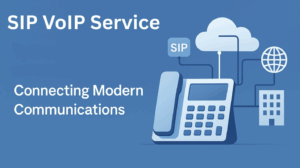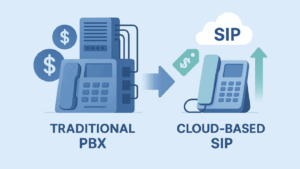
True Crime – Is SIP Trunking Killing the PSTN?
 The public switched telephone network consists of the world’s circuit-swtiched telephone networks that are operated by local, national or regional telecommunications providers. It is the infrastructure on which all public telephone services are based. Because of the PSTN, any telephone in the world can call any other. It includes telephone lines, transmission links, undersea telephone cables, transmission links, cellular networks and more. So you might find it surprising that AT&T and other national and regional communications carriers want it dead.
The public switched telephone network consists of the world’s circuit-swtiched telephone networks that are operated by local, national or regional telecommunications providers. It is the infrastructure on which all public telephone services are based. Because of the PSTN, any telephone in the world can call any other. It includes telephone lines, transmission links, undersea telephone cables, transmission links, cellular networks and more. So you might find it surprising that AT&T and other national and regional communications carriers want it dead.
The Motive
The PSTN has been a chief source of revenue for carriers like AT&T for decades, so why are they trying to off it now? In fact, many vendors have already announced that their PSTN infrastructure and maintenance contracts will face the end-of-life in 2018. This is because it is becoming more and more expensive and difficult to service and upgrade old PSTN equipment and carriers would rather invest in technologies like SIP trunking that represent the future than in what will soon be past.
In addition to the challenges and expense of maintenance, PSTN revenues are also sharply decreasing. Providers are dropping analog voice products and replacing them with digital voice services, often backed by SIP trunking technology. More and more users are moving to mobile and digital voice services meaning fewer users are connected to land lines.
This migration away from the PSTN and traditional land line connections does not make it any less expensive to operate. Energy, real estate, and equipment costs now have to be shared across a much smaller user base, keeping prices high in the face of steeply cheaper SIP trunking options.
The Opportunity and Means
Of course the PSTN cannot simply be turned off in favor of SIP tunking and other IP technologies, but the groundwork for unplugging it is being laid. Just this year, the FCC voted to give AT&T and other carriers the permission to initiate tests of IP-based alternatives to PSTN services is specific locations or situations. Concerns about public safety communications, affordability, rural access and support for people with disabilities all must be addressed before the final sunset for the PSTN, but the carriers and the government are highly motivated and it appears likely that the transition will happen swiftly and be complete within the next 5-7 years.
So while, SIP trunking and related technologies have not killed off the PSTN quite yet, they could certainly be accused of assault with intent to do great bodily harm. It won’t survive long into the next decade if it even makes it there at all.


